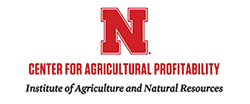Agricultural Economics, Department of

Center for Agricultural Profitability
Sizing Up the Farm Bill Safety Net
Date of this Version
10-16-2024
Document Type
Article
Citation
Cite this work:
Lubben, B. “Sizing Up the Farm Bill Safety Net.” CAP Series 24-1002, Center for Agricultural Profitability, University of Nebraska-Lincoln, Oct. 16, 2024. DOI: 10.32873/unl.dc.cap049.
Abstract
Lower commodity prices and higher production costs over the past couple of years have crop producers concerned about tighter margins and cash flow for their operations.
The federal farm income safety net provides substantial support to producers through commodity programs, crop insurance programs, and disaster assistance. Crop insurance has been the primary safety net tool for producers in recent years as commodity prices generally fluctuated at levels above commodity program support levels. Even declining markets in the past couple years left prices that remained above Price Loss Coverage (PLC) support levels and revenue calculations above Agriculture Risk Coverage (ARC) guarantees unless there were significant yield losses at the county level for ARC-CO or the individual farm level for ARC-IC.
The outlook is changing however as declining prices run into support levels that are increasing based on the past few years of higher prices. The ARC program provides a revenue guarantee tied to 86% of a benchmark revenue calculated from a five-year moving average price and a five-year moving average trend-adjusted yield. The PLC program provides support if prices fall below the higher of a legislated reference price or 85% of a five-year moving average price. With the higher prices experienced during the past few years, the five-year moving average price has increased and both ARC and PLC support levels have gotten stronger.
A look at ARC and PLC protection and payment levels provides a picture of what current support and cash flow may look like and what future support could be under current or future farm legislation.

